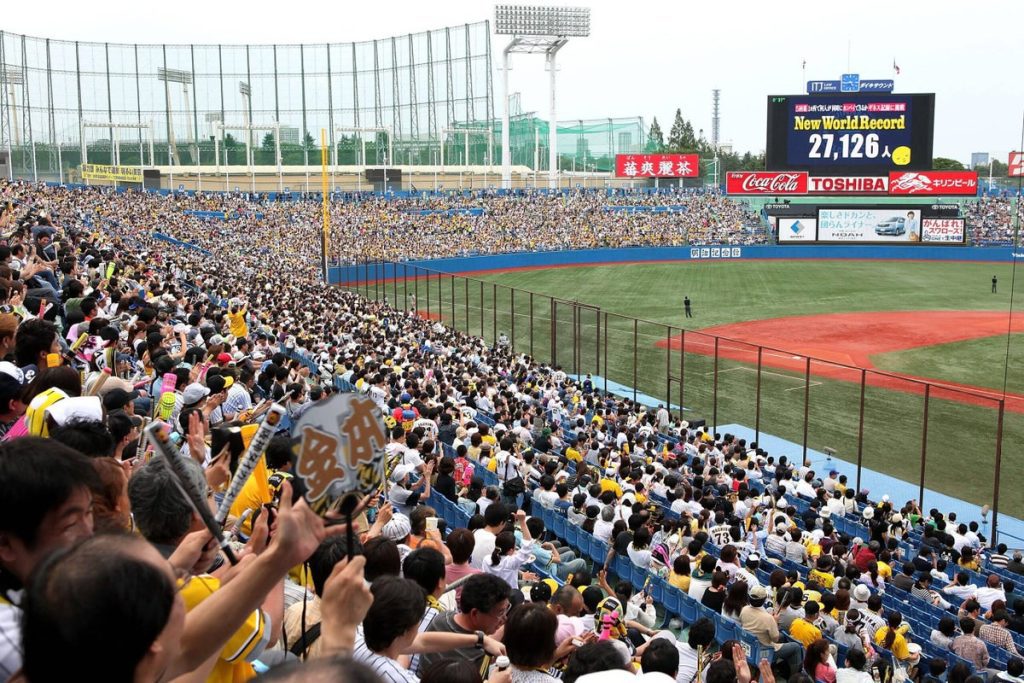Exploring Japan’s Historic Baseball Scene
TOKYO — Located just twenty minutes from the Tokyo Dome is the iconic Meiji Jingu Stadium, a 99-year-old venue steeped in history and one of the rare remaining ballparks that has seen Babe Ruth play. On Tuesday afternoon, the home team, the Yakult Swallows, faced off against the Hanshin Tigers in a spring exhibition, offering baseball fans the chance for a doubleheader, especially for those attending the Dodgers-Cubs season opener that evening at the Dome.
Fans of the Swallows engage in synchronized cheers, using small umbrellas as part of a choreographed ‘umbrella dance.’ This contrasts with the enclosed environment of the Tokyo Dome, as Jingu Stadium provides an outdoor experience that can be quite breathtaking on a perfect day. Jeff Shimizu from Los Angeles particularly appreciated the gameplay, noting the rarity of certain plays in Major League Baseball, such as a batter faking a bunt and swinging instead. “That’s a slash play!” he exclaimed from the stands.
“I admire how Japanese baseball emphasizes fundamental skills,” shared Shimizu, a former youth baseball coach. “It’s a stark contrast. When I watch MLB games, I often see rookie-level mistakes that are less common here.” Shimizu was in Tokyo with JapanBall, a tour company founded in 1999 that facilitates travel for fans wanting to experience Nippon Professional Baseball (NPB). The popularity of MLB among Japanese fans has surged over the last thirty years due to stars like Shohei Ohtani making waves in the U.S., and interest among American fans towards NPB is also starting to grow.
Shane Barclay, the owner of JapanBall, noticed a remarkable uptick in interest, stating, “The metrics show steady growth. We experienced a significant jump recently, largely due to Ohtani’s influence.” He reported a 31 percent increase in email subscribers and a 27 percent rise in social media followers within the past year.
However, while Major League Baseball is actively leveraging Ohtani’s popularity in Japan, the NPB remains considerably less proactive in attracting international fans. Player agent Don Nomura commented on this stagnation, saying, “Japanese baseball hasn’t evolved in the past 50 years. The basic structures remain unchanged, being predominantly controlled by large corporations focused on club advertising rather than the sport itself.” This lack of cohesion among the 12 NPB teams limits its global reach.
Unlike MLB, where one governing body oversees the leagues, NPB consists of two separate leagues, the Central League and the Pacific League, which operate independently. Blogger Yuri Karasawa pointed out that there would be increased recognition and popularity of NPB overseas if they pursued those avenues more aggressively. Currently, individual clubs wield most of the power in NPB, which contrasts sharply with the centralized authority found in MLB.
Nonetheless, there are signs of progress; the Pacific League does offer a streaming package and has begun selling tickets on an English-language site, both aimed at increasing accessibility for international fans. Despite these small advancements, there remains a significant gap in merchandise availability and league-wide coverage compared to MLB, complicating opportunities for foreign fans to engage with Japanese baseball.



